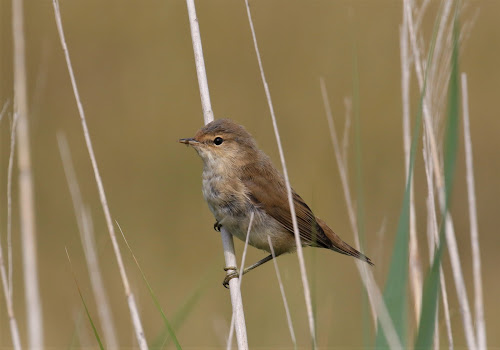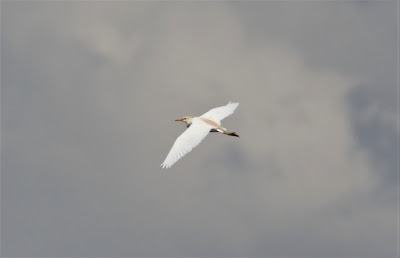Over the weekend, Ian and I walked the whole of Beachy Head on two occasions, in a last ditch attempt to find that June rarity. With plenty of Blyth's Reed Warblers and Rose-coloured Starlings entering the UK currently, it felt worth a go, despite probably knowing that little, if anything, was going to be found.
On Saturday, despite a moderate SE wind blowing, I resisted the urge to do a seawatch, and joined Ian up Beachy. The meagre highlights from the morning were the usual male Black Redstart at Chat Vale, and an Arctic Skua that flew east off Cow Gap - the latter maybe demonstrating that I should've done a seawatch instead!
After a bit of a rest during the afternoon, I did manage to do a seawatch from Peacehaven, seeing just 11 Common Scoters and 9 Sandwich Terns. I do wonder if a proper seawatch had been undertaken, what may have been passing in mid-June... I'm just hoping that Long-tailed Skua didn't pass!
On Sunday, the same route on Beachy with Ian produced just two Crossbills flying west, and a nice adult Hobby, also flying west. At Belle Tout, we got informed of a Large Tortoiseshell at Holywell; a long and brisk walk back resulted in a dip... but thankfully my Dad ensured our dip was short-lived.
Whilst walking Jasper out the back of Denton, Dad phoned informing me of a Large Tortoiseshell he had just found, and seemingly, showing well and loyal to a small area. Eventually, I made it and the butterfly showed brilliantly for a duration... a long awaited new butterfly for Sussex/UK. Whilst watching the butterfly, a female Marsh Harrier flew over, presumably migrating. Very strange, not only for the time of year, but also the fact it was in heavy moult!
 |
| Black Redstart at Chat Vale |
 |
| Large Tortoiseshell near Seaford |






































